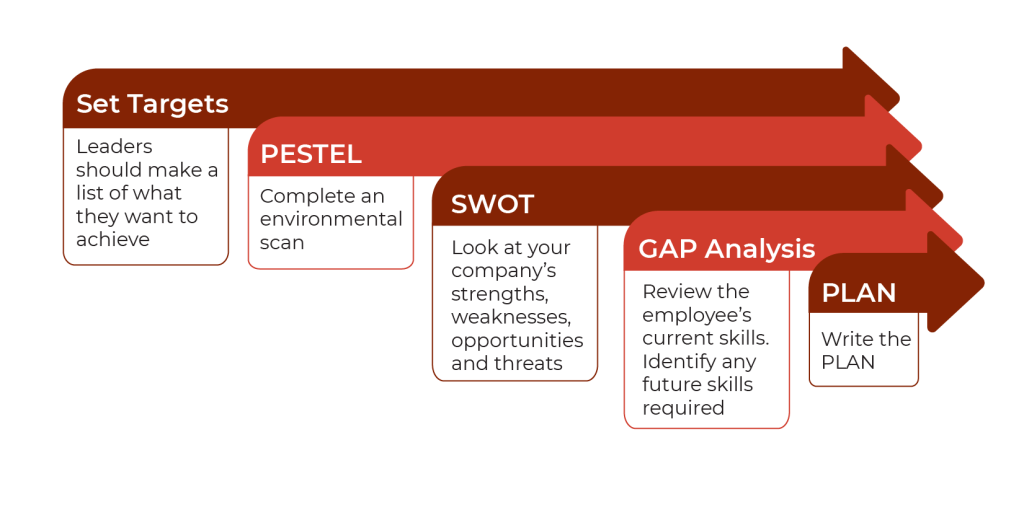1.3 Strategic Planning
The Merriam-Webster dictionary defines planning as “the act or process of making or carrying out plans.” Strategic planning is when the leadership team looks towards the future, with an awareness of the current environment and likely future events in mind, to determine the best way to achieve organizational objectives in the upcoming years.
The strategic plan is the document used to communicate organizational objectives and the actions required to achieve the goals. A strategic plan’s job is to guide the employee’s actions toward the achievement of the stated goals.
Think of the strategic plan as a New Year’s Resolution. Each New Year, it is common for people to write out a list of goals that they intend to achieve in the upcoming year. The strategic plan is a list of goals that the company intends to achieve in the upcoming three to five years.
Why is a Strategic Plan important?
A strategic plan provides individual employees with a clearer role perception. It outlines expectations so that staff know and work together to achieve the goals. Role perception includes the employee’s understanding of specific duties and consequences for which they are responsible, company expectations and performance criteria, and preferred procedures for accomplishing tasks.
Organizational behaviour (OB) studies how people think, feel, and behave individually or in groups within organizations. The MARS model of individual behaviour examines how Motivation, Ability, Role perception, and Situational factors affect organizational behaviour and results. Studies show that employees with role perception clarity perform better than employees with role perception ambiguity (Bray & Brawley, 2002). Role perception includes the employee understanding specific duties and consequences for which they are responsible, company expectations and performance criteria, and preferred procedures for accomplishing tasks (van der Meer, 2023).
Examples of strategic goals related to facilities management:
- Provide a clean and safe environment to our residents and staff.
- Engage in a proactive preventative maintenance program to ensure business continuity.
- Design a functional new dining room for residents and staff.
How are Strategic Plans Created?
Steps in the Strategic Planning Process

Image Description
A series of arrows from right to left, each with a step of the strategic planning process.
Set Targets: Leaders should make a list of what they want to achieve.
PESTEL: Complete an environmental scan.
SWOT: Look at your company’s strengths, weaknesses, opportunities, and threats.
GAP Analysis: Review the employee’s current skills. Identify any future skills required.
PLAN: Write the plan.
*PESTEL is an acronym for Political, Economic, Social, Technological, Environmental, and Legal. PESTEL requires the company to focus on the external environment and identify issues that may impact the company’s business goals and processes.
*A SWOT analysis is a method used to identify an organization’s strengths, weaknesses, opportunities, and threats. Strengths should focus on what makes the organization unique. What separates the organization from the competition? Weaknesses identify areas for improvement. Opportunities are found in the external environment. What is happening in the external environment that is beneficial to the company? Threats are elements that have the potential to impede the organization from achieving its objectives.
Once the strategic plan is created, the leadership team should identify resources that will be helpful in executing the strategic plan. The next step is the implementation of the plan, which includes the presentation of the plan to employees. The strategic plan should be presented in a way that encourages employee buy-in. What does the leadership team need to do to encourage the employees to support the strategic plan? The plan should be evaluated on an annual basis.
Definition of OB from “Chapter 1: What Is Organizational Behavior?” from Organizational Behaviour Copyright © 2019 by Seneca College is licensed under a Creative Commons Attribution-NonCommercial 4.0 International License, except where otherwise noted.–Modifications: Used first sentence of paragraph nine.

